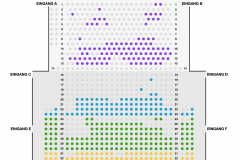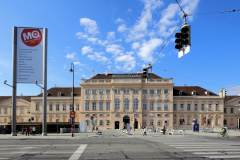Sidi Larbi Cherkaoui
December 2025 | ||||||
|---|---|---|---|---|---|---|
Mo | Tu | We | Th | Fr | Sa | Su |
The famous Belgian choreographer Sidi Larbi Cherkaoui, known for his stunning and often (cosmo-)political dance pieces, where his Moroccan background sometimes plays a role, is fascinated by the social significance of Johann Strauss' dance compositions. Originally, their historical setting was the (Viennese) ballroom; however, these waltzes, mazurkas, and polkas, which now appear timeless, quickly became a key reference for social dance and a hallmark of an entire era. In his unique contribution to Johann Strauss 2025 Vienna, Cherkaoui reflects on the urge of "society" to control its citizens through those quasi-aristocratic codes of behavior found at balls and elite social gatherings: How do we make each other behave in a way we deem acceptable – or not? The idea of a ball as a place of connection, where different rules apply, can be both restrictive and liberating. So, is dancing – when celebrated socially – still freedom?
In Sidi Larbi Cherkaoui's choreography, the ensemble of the Ballet du Grand Théâtre de Genève performs, live, accompanied by the Vienna Chamber Orchestra under the baton of Constantin Trinks.
Program and cast
MuseumsQuartier Vienna
The Museumsquartier (MQ) is an area of 9 ha (22 acres) in the 7th district of the city of Vienna, Austria.
The Museumsquartier contains Baroque buildings as well as Modern architecture by the architects Laurids and Manfred Ortner (Ortner & Ortner Baukunst). The renovation of the former court stables began in April 1998. Three years later, the Museumsquartier opened in two stages (June and September 2001).
The MQ is home to a range of installations from large art museums like the Leopold Museum and the MUMOK (Museum of Modern Art Ludwig Foundation Vienna) to contemporary exhibition spaces like the Kunsthalle Wien and festivals like the Wiener Festwochen, an annual summer event that is headquartered in the MuseumsQuartier Wien.

 EN
EN DE
DE IT
IT FR
FR ES
ES RU
RU JP
JP RO
RO
 Seating plan
Seating plan 